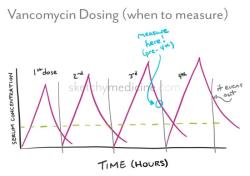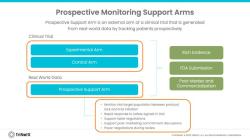Which leads on ECG are inferior views of the heart?
In an electrocardiogram (ECG or EKG), the inferior leads provide views of the inferior part of the heart. The inferior leads are leads II, III, and aVF. Here's a brief explanation of each:
Lead II: Lead II is one of the limb leads and is obtained by placing the positive electrode on the left leg (LL) and the negative electrode on the right arm (RA). It is often referred to as the "inferior lead" and provides a view of the inferior part of the heart, including the inferior wall of the left ventricle.
Lead III: Lead III is another limb lead, and it is obtained by placing the positive electrode on the left leg (LL) and the negative electrode on the left arm (LA). It also provides an inferior view of the heart.
Lead aVF: Lead aVF, which stands for "augmented vector foot," is another limb lead. It is obtained by placing the positive electrode on the left leg (LL) while the negative electrode is connected to a combination of the right arm (RA) and the left arm (LA). Lead aVF primarily looks at the inferior surface of the heart.
Together, these inferior leads help assess the electrical activity and changes in the inferior portion of the heart, which includes the diaphragmatic surface and the right ventricle. They are essential for diagnosing conditions like inferior myocardial infarctions (heart attacks), which affect this region of the heart.
1. Exploring ECG Leads: Understanding the Inferior Heart Views
The inferior leads of an electrocardiogram (ECG) provide a view of the bottom of the heart. This view is important for diagnosing and managing a number of heart conditions, including inferior wall myocardial infarction (MI), also known as inferior wall ST-segment elevation MI (STEMI).
The inferior leads of an ECG include:
- II: This lead measures the electrical activity of the heart from the right arm to the left leg.
- III: This lead measures the electrical activity of the heart from the right arm to the left foot.
- aVF: This lead measures the electrical activity of the heart from the left arm and the right leg to the mean electrical potential of the heart.
2. The Heart's Bottom View: Deciphering Inferior Leads in ECG
The inferior leads of an ECG can be used to assess a number of different parameters, including:
- Heart rate: The heart rate can be calculated by counting the number of QRS complexes in a given period of time.
- Rhythm: The rhythm of the heart can be assessed by looking at the pattern of the QRS complexes and P waves.
- ST segment: The ST segment is a flat line on the ECG that represents the time between the end of the QRS complex and the beginning of the T wave. Elevations or depressions in the ST segment can be indicative of heart problems.
- T wave: The T wave is a positive wave on the ECG that represents the repolarization of the ventricles. Inverted T waves can be indicative of heart problems.
3. Electrocardiography Insights: Inferior Heart Views and Their Significance
The inferior leads of an ECG are important for diagnosing and managing a number of heart conditions, including:
- Inferior wall MI: An inferior wall MI occurs when the blood supply to the inferior wall of the heart is blocked. This can cause damage to the heart muscle and can be a life-threatening condition. The inferior leads of an ECG can be used to diagnose an inferior wall MI by looking for ST-segment elevation.
- Pericarditis: Pericarditis is an inflammation of the pericardium, the sac that surrounds the heart. Pericarditis can cause a number of different symptoms, including chest pain, shortness of breath, and palpitations. The inferior leads of an ECG can be used to diagnose pericarditis by looking for PR segment elevation and ST-segment depression.
- Left ventricular hypertrophy: Left ventricular hypertrophy is a condition in which the left ventricle of the heart becomes enlarged. This can be caused by a number of different factors, including high blood pressure, aortic stenosis, and mitral regurgitation. The inferior leads of an ECG can be used to diagnose left ventricular hypertrophy by looking for Q waves in leads II, III, and aVF.
The inferior leads of an ECG are an important tool for diagnosing and managing a number of heart conditions. By understanding how to interpret the inferior leads of an ECG, healthcare professionals can provide better care to their patients.
If you have any concerns about your heart health, you should see a doctor for an evaluation.












